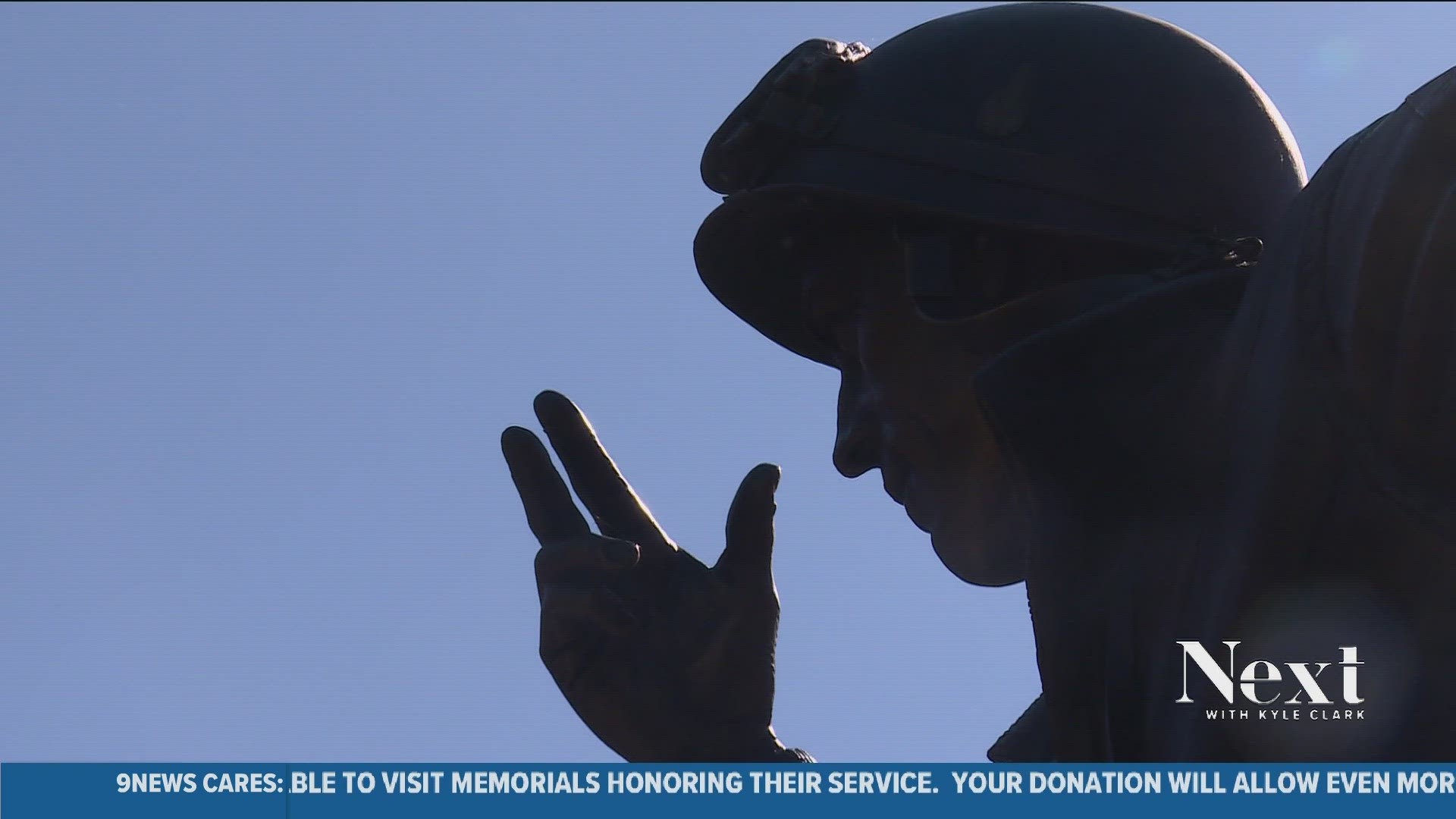DENVER — The surprise attack on Pearl Harbor on December 7, 1941, put the United States in World War II. The actions of a Jewish solider from Denver helped lead the U.S. to victory.
General Maurice Rose is one of the most important figures of World War II, and perhaps, one of the least known. A statue in his honor was dedicated at Veterans Memorial Park, across the street from the State Capitol, earlier this year.
Now, elementary school field trips are learning more about Rose and his hidden teachings.
“There’s 18 different symbols,” Paul Shamon, General Rose Statute Organizer, said.
Shamon, who spearheaded the effort to get a Rose statute built in the first place, revealed the 18 hidden Jewish symbols in the base of the statue ahead of a field trip by an elementary school class.
The 18 symbols are:
- The Hebrew word “Shalom”
- Hamza
- Mezuzah
- Star of David
- Chai
- Ten Commandments
- Shabbat Candlesticks
- Tallit prayer shawl
- Tree of Life
- Chanukiah – 9 Candles
- Menorah – 7 Candles
- Torah Scroll
- Challah
- Wine Cup
- The Hebrew words “L’dor V’dor” meaning “from generation to generation.”
- Dove of Peace
- Eternal Light
- Shofar
“That was my idea, and that came from when I was a child in doctor’s offices. If you’re old enough you remember the Highlights page. That was a search and something fun to do,” Shamon said.
Spoiler alert: There is a cheat sheet to guide you to the symbols. Do not open this link if you want to search them out for yourself.
“Part of the idea of having this statue was to be an educational tool. The other part was on Jewish symbolism,” Shamon said.
When he was killed in combat in 1945, Rose was the highest-ranking Jewish soldier.
“The plan is that they first learn about General Rose, about the monument and about the curriculum and the class, and then they come out as a fun field trip and try to find each of the 18 hidden symbols,” Shamon said.
“It makes it more engaging for the kids. It’s their goal to find the symbols that they learned about in school,” Stacey Helbig, 4th grade teacher at Centennial Academy, said.
On a recent field trip of fourth graders, the students of Centennial Academy of Fine Arts in Littleton, were able to see the statute of a soldier they learned about in a classroom curriculum, and then find the hidden symbols they were also taught.
“We teach through symbols. We teach through art. Because we’re an art school,” Helbig said.
“We’re an art school, so to bring an artist’s vision of studying General Rose and who he was and his impact, not only on Colorado, but to the world, and how an artist might learn about somebody and then, depict that person,” Liz Andrews, 4th grade teacher at Centennial Academy, said.
The class spent several minutes, taking turns, looking for the symbols and talking about their meaning.
“It gives them a chance to experience something and not just read about it, Shamon said.
He explained that the curriculum around Rose and the statue are supposed to teach social studies, history, religion and art.
“Even adults don’t know about General Rose and what he did, and some don’t know about the symbols and what they stand for,” Shamon said. “There can never be enough education.”
By the end of the field trip, the students were challenged to think about how they might be immortalized in bronze.
“What might your statute look like? What accomplishments have you made?” Andrews said. “Think about what your statute might have, and then you can live that legacy out.”
SUGGESTED VIDEOS: Next with Kyle Clark

